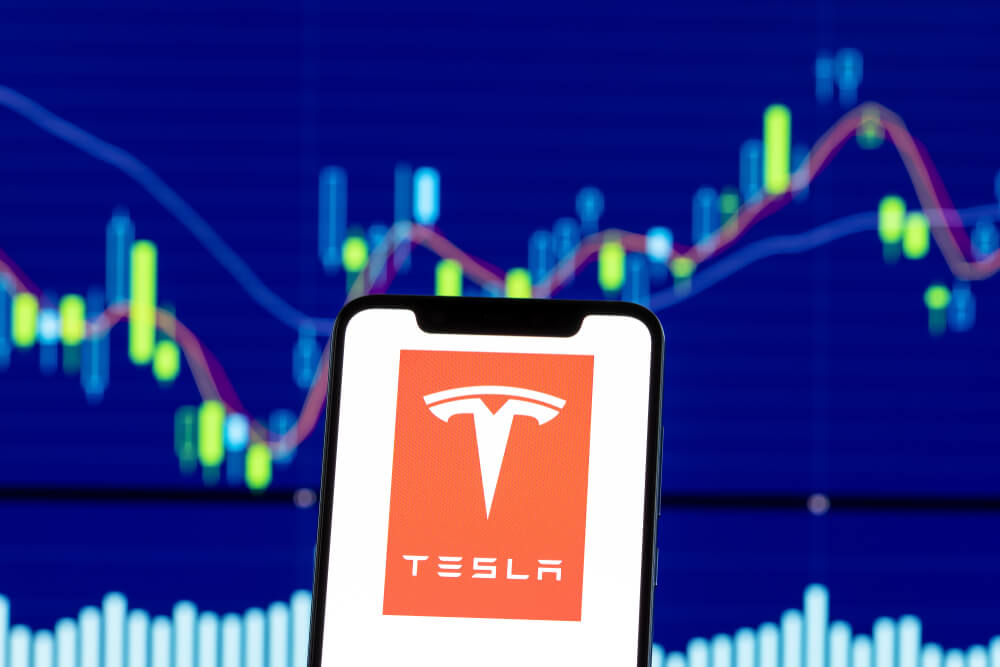Before we talk about the rise of Tesla, let me take you back in time to 2017.
The news dominating financial headlines was the unprecedented climb of a commodity that no one saw coming.
Over the course of a year, Bitcoin had a massive jump to reach an all-time high of $20,000 before it retreated (it’s currently trading around $9,200).
That was a rise that no one expected to see again ever — let alone just three years later.
But here we are as Tesla Inc. (Nasdaq: TSLA) has jumped more than 330% since June 2019 to reach more than $900 a share this morning.
How Bitcoin Reached Record Highs
From Jan. 10, 2017, to Dec. 19, 2017 — when bitcoin reached its high point of $19,659 — the cryptocurrency expanded by more than 2,000%.
But instead of just good old-fashioned market economics, a 2018 research report found that a good portion of bitcoin’s rise in price was due to the use of another crypto to buy Bitcoin.
University of Texas finance professor John Griffin found that Bitcoin price activity was tied directly to the issuance of tether — a currency tied to the value of the U.S. dollar.
“It was creating price support for Bitcoin and over the period that we examined, had huge price effects,” Griffin told CNBC at the time of the report. “Our research would indicate that there are sophisticated people harnessing investor interest for their benefit.”
He said around 50% of the rise in bitcoin could be attributed back to heavy tether trading.
But the rise in Tesla is quite a bit different.
How the Rise Of Tesla Came About
Since being priced at $178.97 back in June 2019, shares of Tesla have jumped more than 335% to today.
But its financials would suggest it shouldn’t be going in that direction. It has hardly any revenue growth and its Q4 profit was only slightly higher than previous quarters.
Tech Crunch’s Alex Wilhelm asked if the rise could be attributed to a short squeeze, bullish analysts or new car production.
Regardless of the reasoning, Wall Street analysts have raced to increase their price point for the electric automaker. One has even raised her outlook to $7,000 a share by 2024. If Tesla hits the $7,000 mark, it would be an increase of 3,800% since June 2019.
“There’s no telling how high the initial jump can take it, but Tesla is no stranger to parabolic moves,” Banyan Hill Publishing analyst Chad Shoop said. “The stock surged more than 800% in two years from 2012 to 2014. It jumped more than 100% from November 2016 to July 2017. And now, it is up more than 250% since June.”
Besides the bullish position analysts are taking in Tesla, its Q4 results are just adding more fuel to the file.
The Next Step in Tesla’s Rise
The rise of Tesla from 2019 to today is awfully similar to that of Bitcoin in 2017.
Crypto venture capitalist Mike Novogratz used data to show the side-by-side growth between the two companies:
The orange line is the rise of Bitcoin in 2017 while the white line is the rise of Tesla in 2019.
While the percentages aren’t the same, the trajectory is.
The bad news in that is Bitcoin suffered a halving of its gains to start 2018 — when its price dropped to around $9,000 — and it hit record lows of $3,100 by the end of the year.
Bitcoin prices are now ticking back up — the crypto was over $9,200 early Tuesday afternoon.
But is Bitcoin’s rise a cautionary tale for Tesla?
“Another massive rally and Tesla could still run even higher. But the great news is that these previous rallies weren’t a blow-off top for the stock,” Shoop said. “It consolidated after the huge runs, but maintained the high level.”
And if Tesla does reach that $7,000 price point, it will surpass the percentage rise bitcoin experienced in 2017. That would be a 3,800% increase from its June 2019 price.
Tesla reaching that threshold is certainly not a foregone conclusion. A lot of things need to happen in order for the company to even come close that level. New products to market, successful self-driving software and regulatory approval for new products are among several of the pieces of the Tesla puzzle that have to come together.
But Tesla is helping its cause by increasing sales and production in China. Marketing strongly to the largest population of the world can do wonders to offset any potential flattening of sales in the U.S. The company is also adding a factory in Germany to boost its European deliveries.
For now, however, Shoop said the company is looking for its next level to consistently trade at.
“I don’t see it as a buying opportunity or a selling opportunity,” Shoop said. “But the stock is likely to find a new elevated price channel that it will trade in for the next few years.”
